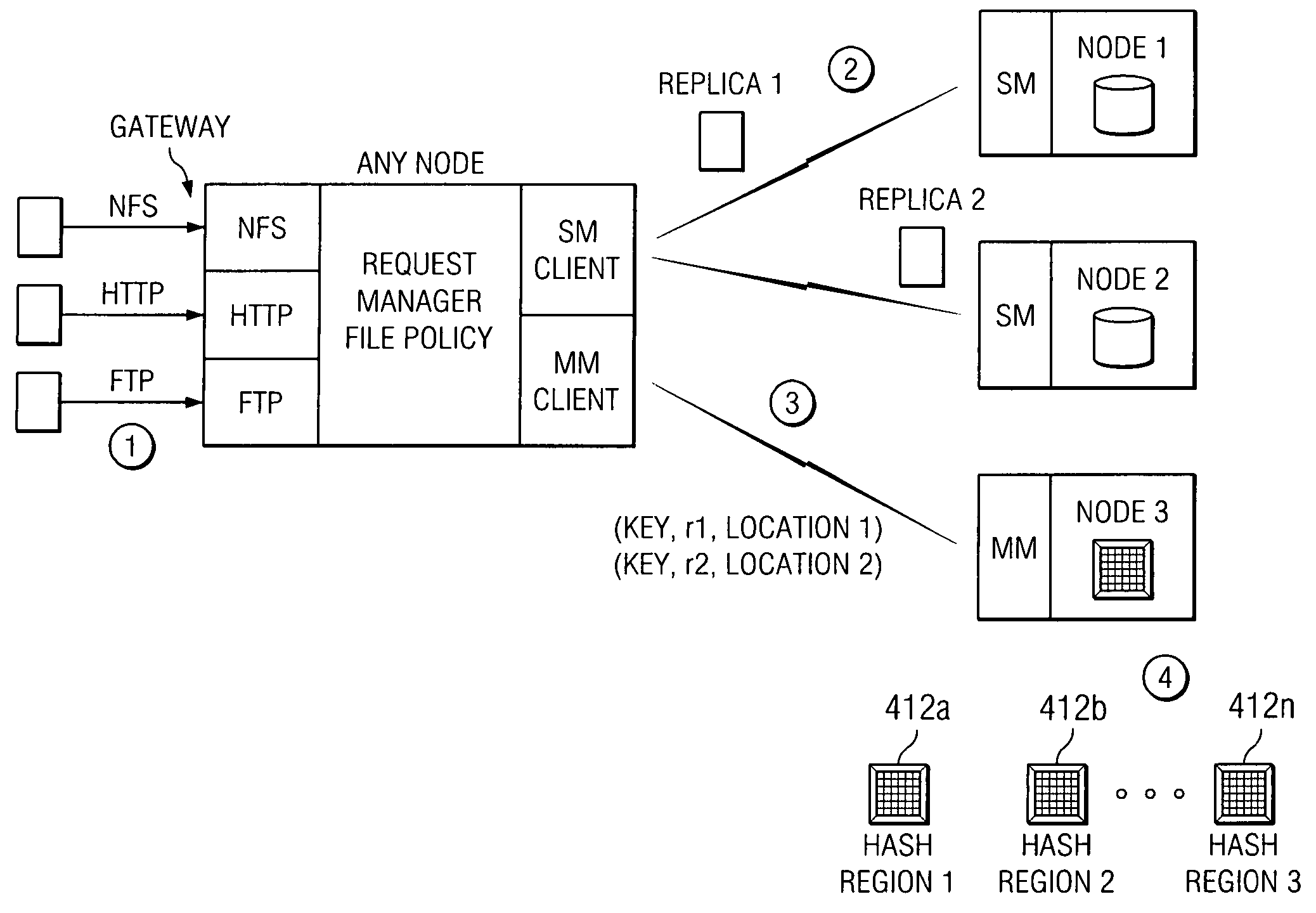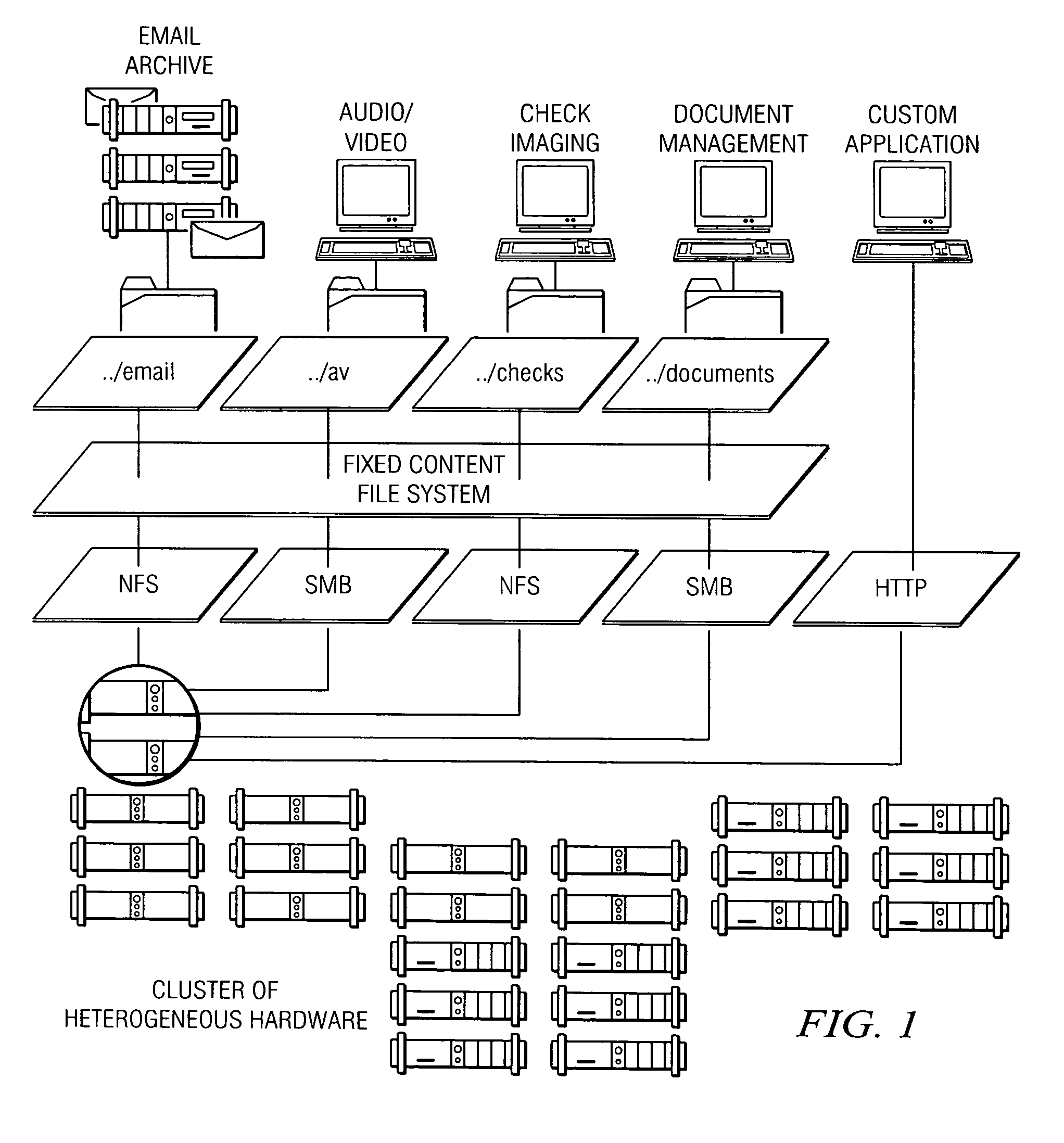Policy-based management of a redundant array of independent nodes
a policy-based management and independent node technology, applied in the field of highly available, reliable, persistent data storage in a distributed computer network, can solve the problems of unable to meet the needs of large-scale archive construction, etc., to achieve the effect of reducing the complexity of creating and maintaining very large digital archives
- Summary
- Abstract
- Description
- Claims
- Application Information
AI Technical Summary
Benefits of technology
Problems solved by technology
Method used
Image
Examples
Embodiment Construction
[0022] The present invention preferably is implemented in a scalable disk-based archival storage management system, preferably a system architecture based on a redundant array of independent nodes. The nodes may comprise different hardware and thus may be considered “heterogeneous.” In contrast, the archive cluster application (and, optionally, the underlying operating system on which that application executes) that is supported on each node is the same. Thus, the software stack (which may include the operating system) on each node is symmetric, whereas the hardware may be heterogeneous. Using the present invention, as illustrated in FIG. 1, enterprises can create permanent storage for many different types of fixed content information such as documents, e-mail, satellite images, diagnostic images, check images, voice recordings, video, and the like, among others. These types are merely illustrative, of course. High levels of reliability are achieved by replicating data on independen...
PUM
 Login to View More
Login to View More Abstract
Description
Claims
Application Information
 Login to View More
Login to View More - R&D
- Intellectual Property
- Life Sciences
- Materials
- Tech Scout
- Unparalleled Data Quality
- Higher Quality Content
- 60% Fewer Hallucinations
Browse by: Latest US Patents, China's latest patents, Technical Efficacy Thesaurus, Application Domain, Technology Topic, Popular Technical Reports.
© 2025 PatSnap. All rights reserved.Legal|Privacy policy|Modern Slavery Act Transparency Statement|Sitemap|About US| Contact US: help@patsnap.com



